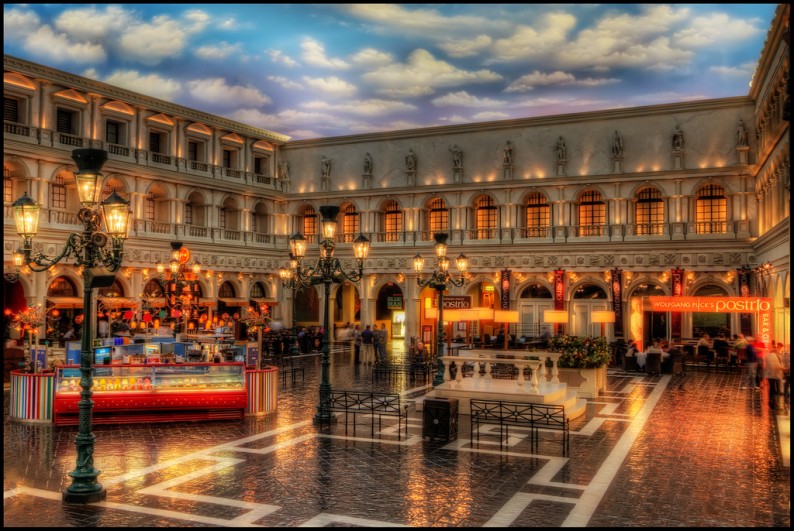Las Vegas is located in the middle of the dry, hot Nevada desert. Native American Indians have lived in the area for many hundreds of years, and then Europeans established the settlement in the early 1800′s due to it’s natural spring waters. Today Las Vegas is largely a man-made oasis, but that doesn’t mean that summers there are comfortable. June through September it is hot every day with July and August being the hottest months. Temperatures can rise to above 40°C and heat stroke is a real danger. It is important to be prepared for such extreme weather and take preventative measures such as always having bottled water readily on hand and wearing a hat if you’re out in the sun for long. The casinos, hotels and restaurants are air-conditioned havens and a welcome antidote to the heat outside. I’m sure it encourages visitors to stay inside longer and
gamble more ![]()
As I said above it’s best to avoid heat stroke in the first place, but it is important to know what to look for if you or someone you’re with starts feeling ill. Let us first talk about the signs of heat stroke and what to do when they occur. The first sign of a heat stroke is usually feeling faint. Other symptoms may be a throbbing headache, nausea, vomiting and unconsciousness.
If you notice that, when it is hot outside, someone is not sweating anymore and/or has a red, hot and dry skin, that person will almost be certainly having a heat stroke, also known as sunstroke. Symptoms that are more difficult to notice are lightheadedness, a rapid heartbeat or changes in behaviour such as disorientation and confusion. A heat stroke is a medical emergency and from the moment you suspect that someone – including yourself – is suffering from one it is of vital importance to call a doctor or hospital. Transport the person to a cooler environment, air-conditioned or at least shaded and take off all unnecessary clothes. Try to cool down the person’s body temperature by wetting his or her skin and waving air over the body. Other methods are placing ice on the armpits, groin, neck and back, places with lots of blood vessels. Place the person in a cool bath or under a shower.
Of course it is best to do everything you can to avoid the above-mentioned troubles. There are in fact several things to keep in mind when spending time in the Las Vegas heat. Casinos will love this, but if it is unbearably hot outside, you should spend your afternoons inside. Don’t go looking for trouble. You don’t have to go spend your money in casinos though; a welcome afternoon nap could be nice as well. Waiting to go for walks until the evening will greatly reduce your chance of getting a heat stroke and you will be rewarded with a desert sunset. By all means, do not even think about going for a run or doing other sports in the afternoon. Swimming in the pool is allowed though and is possibly the best and most fun way to get through a hot day. Whatever you do, make sure to stay hydrated and drink plenty of water or juices. Loads of coffee, cola and beer are out of the question. You can have enough of that in the mornings/nights. If you absolutely have to go in the sun, make sure to wear a hat or cap, light clothing and loads of sunscreen.
Let’s sum that up. In the afternoon avoid drinking alcohol and spending a lot of time in the sun. It is best to stay inside or in the pool, drinking water and juices. If you do feel ill, nauseous, disoriented or any of the other symptoms, find a cooler spot and try to cool down.
At night, when it cools off, watching the spectacular fountain show at the Bellagio Hotel Las Vegas is one of the most romantic ways to spend your evening without it costing you a thing.
photo credit: szeke via photopin cc


Leave A Comment